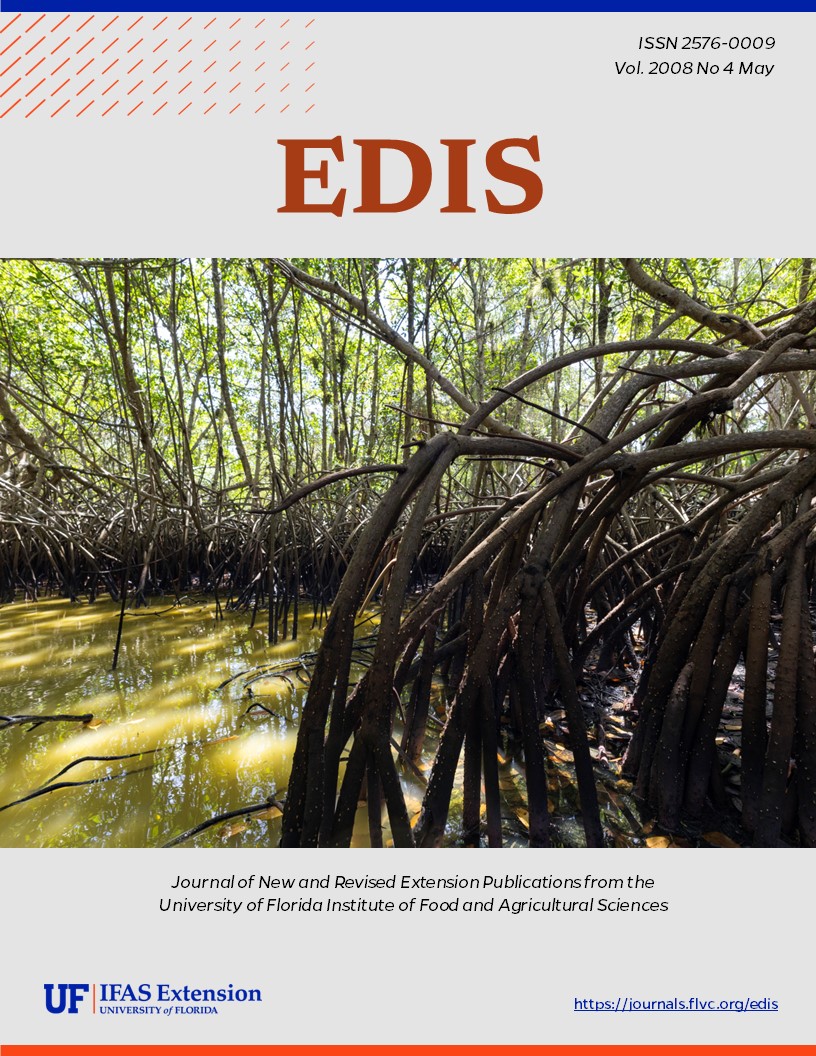Abstract
ENH-1090, a 6-page illustrated fact sheet by Carrie Reinhardt Adams and Nancy M. Steigerwalt, summarizes standard techniques for wetland seed bank assays, including greenhouse set-up, sample collection and sample processing. Includes references. Published by the UF Department of Environmental Horticulture, February 2008.
ENH1090/EP354: Methodology for Wetland Seedbank Assays (ufl.edu)
References
Barko, J. W. and R. M. Smart. 1983. Effects of organic matter additions to sediment on the growth of aquatic plants. Journal of Ecology 71:161-175. https://doi.org/10.2307/2259969
Baskin, C. C. and J. M. Baskin. 2001. Seeds: Ecology, Biogeography, and Evolution of dormancy and germination. Academic Press: San Diego.
Bigwood, D. W. and D. W. Inouye. 1988. Spatial pattern analysis of seed banks: An improved method and optimized sampling. Ecology 69:497-507. https://doi.org/10.2307/1940448
Boedeltje, G., G. N. J. ter Heerdt, J.P. Bakker. 2002. Applying the seedling-emergence method under waterlogged conditions to detect the seed bank of aquatic plants in submerged sediments. Aquatic Botany 72:121-128. https://doi.org/10.1016/S0304-3770(01)00224-8
Combroux, I., G. Bornette, N. J. Willby, and C. Amoros. 2001. Regenerative strategies of aquatic plants in disturbed habitats: The role of the propagule bank. Archiv fuer Hydrobiologie 152:215-235.
Combroux, I., G. Bornette, and C. Amoros. 2002. Plant regenerative strategies after a major disturbance: The case of a riverine wetland restoration. Wetlands 22:234-246. Anne Frances. personal communication. https://doi.org/10.1672/0277-5212(2002)022[0234:PRSAAM]2.0.CO;2
Galatowitsch, S. M. and A. G. van der Valk. 1996. The vegetation of restored and natural prairie wetlands. Ecological Applications 6:102-112. https://doi.org/10.2307/2269557
Haag, R. W. 1983. Emergence of seedlings of aquatic macrophytes from lake sediments. Canadian Journal of Botany 61:148-156. https://doi.org/10.1139/b83-014
Hanselman, J. A., M. B. Bush, and M. A. Lee. 2005. Seed content and percent organic matter in surface sediments as indicators of wetland plant communities, Blue Cypress Marsh, Florida. Florida Scientist 68:250-260.
Harwell, M. C. and K. E. Havens. 2003. Experimental studies on the recovery potential of submerged aquatic vegetation after flooding and desiccation in a large subtropical lake. Aquatic Botany 77: 135-151. https://doi.org/10.1016/S0304-3770(03)00101-3
Leeds, J. A., S. M. Smith, and P. B. Garrett. 2002. Seedbanks and their potential role in the vegetation dynamics of a northern Everglades Marsh. Florida Scientist 65:16-34.
Looney, P. B. and D. J. Gibson. 1995. The relationship between the soil seed bank and above-ground vegetation of a coastal barrier island. Journal of Vegetation Science 6:825-836. https://doi.org/10.2307/3236396
Mahaney, W. M., D. H. Wardrop, and R. P. Brooks. 2004. Impacts of sedimentation and nitrogen enrichment on wetland plant community development. Plant Ecology 175:227-243. https://doi.org/10.1007/s11258-005-0011-2
McCune, B. and J. B. Grace. 2002. Analysis of Ecological Communities. MjM Software Design: Gleneden Beach, OR.
Miao, S. L., P. V. McCormick, S. Newman, and S. Rajagopalan. 2001. Interactive effects of seed availability, water depth, and phosphorus enrichment on cattail colonization in an Everglades wetland. Wetlands Ecology and Management 9:39-47. https://doi.org/10.1023/A:1008402916975
Poiani, K. A. and W. C. Johnson. 1988. Evaluation of the emergence method in estimating seed bank composition of prairie wetlands. Aquatic Botany 32:91-97. https://doi.org/10.1016/0304-3770(88)90090-3
Roberts, H. A. 1981. Seed banks in soil. Advances in Applied Biology 6:1-55.
Smith, S. M., P. V. McCormick, J. A. Leeds, and P. B Garrett. 2002. Constraints of seed bank species composition and water depth for restoring vegetation in the Florida Everglades, U.S.A. Restoration Ecology 10:138-145. https://doi.org/10.1046/j.1526-100X.2002.10115.x
ter Heerdt, G. N. J., G. L. Verweij, R. M. Bekker, and J. P. Bakker. 1996. An improved method for seed-bank analysis: seedling emergence after removing the soil by sieving. Functional Ecology 10: 144-151. https://doi.org/10.2307/2390273
van der Valk, A. G. 1978. The role of seed banks in the vegetation dynamics of prairie glacial marshes. Ecology 59:322-335. https://doi.org/10.2307/1936377
van der Valk, A. G. and T. R. Rosburg.1997. Seed bank composition along a phosphorus gradient in the northern Florida Everglades. Wetlands 17:228-236. https://doi.org/10.1007/BF03161411
Williges, K. A. and T. T. Harris. 1995. Seed bank dynamics in the Lake Okeechobee marsh ecosystem. Ergebnisse der Limnologie 45:79-94.

